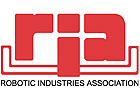

The good news is that assembly has a great friend in robotics. Assembly is an area Robotic Industries Association emphasizes with a new online tutorial available from Robotics Online (www.robotics.org). Click the Safety and Training section of the web site and go to the “Robotics for Assembly Automation Tutorial.” This is one of several free tutorials that provide expert information from RIA members to help new users succeed with robotics technology.
Another way RIA members help users solve assembly challenges is through a Robotics Online forum called “Ask the Experts.” This section of the web site covers a number of popular topics, and there are nearly 30 experts available to answer specific questions about assembly. Many happy users find golden insights from RIA members.
It is common to wonder if robots are difficult to use, and the answer is that after decades of development they are very user friendly. In fact, you might be surprised to learn that compared to hard automation, robotic systems tend to be less complex. Why? For one thing, robots can take the place of other electrical and mechanical devices used in “conventional” configurations. That means less to maintain and repair.
Higher reliability is another big factor for choosing robots in assembly applications. Years of statistics show robots deliver 50,000 to 100,000 hours of mean time between failure of operation. According to RIA experts, a three-axis pneumatic manipulator is six times more likely to be visited by the Grinch of failure than a six-axis robot.
While robots are easier to use and more reliable than their hard automation counterparts, the fact they tend to be less expensive is, of course, very important. Price points have been driven down while technology and performance have gone up to the point you can get at least 25 percent more machine now for less than you would have a few decades ago.
Robots have done more to improve the manufacturing landscape than nearly any other technology. They are time savers, space savers and budget savers. Companies that learn how to harness the advantages of robotics for assembly will be ready for the economic upturn when it happens.
Like any good trade association, the Robotic Industries Association promotes networking and technology transfer. Information sharing with RIA members is facilitated through Robotics Online and in the form of training and education. Some companies (Toyota, for instance) have surprised their competition by opting for more training as a strategic tactic to weather the economic downturn.
RIA has a deep pool of experts to help users determine how to succeed with robotics and prepare their companies for a brighter future. Train and prepare as much as you can to be in the best position possible to outperform the competition. Toward that end, mark your calendar for the bigInternational Robots, Vision & Motion Control Show and ConferenceJune 9-11, 2009, in Rosemont (Chicago), IL.
If you want a happy return on investment, look into robotics and apply for a corporate membership in Robotic Industries Association. Our board, our committees and the RIA staff believe those who stay involved with us will be among the first to see and ride an upturn in the economy. We sincerely hope you will have prosperity and wish you good tidings in the New Year.


